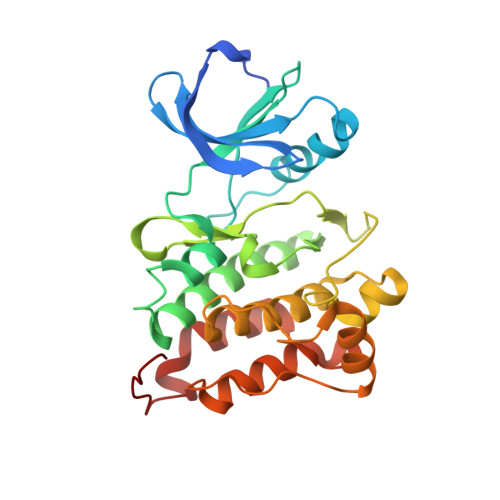Activation of tyrosine kinases by mutation of the gatekeeper threonine.
Azam, M., Seeliger, M.A., Gray, N.S., Kuriyan, J., Daley, G.Q.(2008) Nat Struct Mol Biol 15: 1109-1118
- PubMed: 18794843
- DOI: https://doi.org/10.1038/nsmb.1486
- Primary Citation of Related Structures:
3DQW, 3DQX - PubMed Abstract:
Protein kinases targeted by small-molecule inhibitors develop resistance through mutation of the 'gatekeeper' threonine residue of the active site. Here we show that the gatekeeper mutation in the cellular forms of c-ABL, c-SRC, platelet-derived growth factor receptor-alpha and -beta, and epidermal growth factor receptor activates the kinase and promotes malignant transformation of BaF3 cells. Structural analysis reveals that a network of hydrophobic interactions-the hydrophobic spine-characteristic of the active kinase conformation is stabilized by the gatekeeper substitution. Substitution of glycine for the residues constituting the spine disrupts the hydrophobic connectivity and inactivates the kinase. Furthermore, a small-molecule inhibitor that maximizes complementarity with the dismantled spine (compound 14) inhibits the gatekeeper mutation of BCR-ABL-T315I. These results demonstrate that mutation of the gatekeeper threonine is a common mechanism of activation for tyrosine kinases and provide structural insights to guide the development of next-generation inhibitors.
Organizational Affiliation:
Karp research building, 7th floor, Division of Pediatric Hematology/Oncology, Children's Hospital of Boston, Massachusetts 02115, USA.















